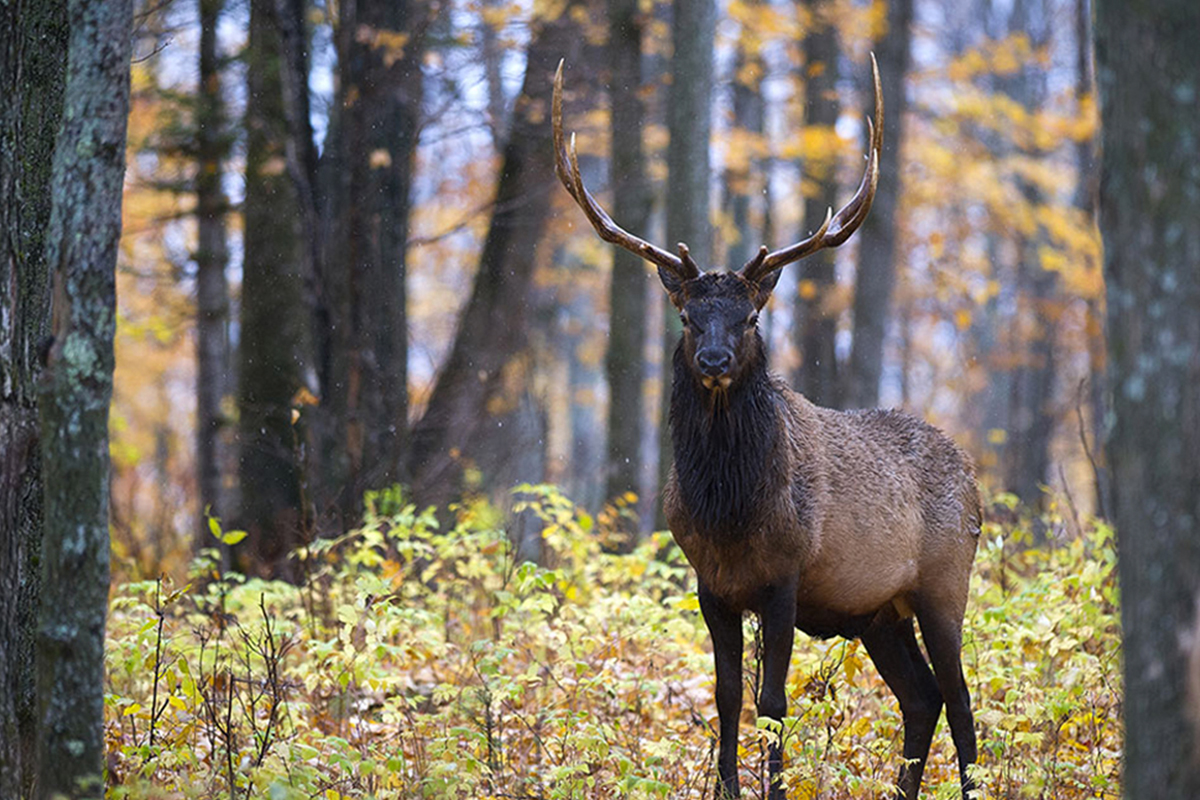Hunting, fishing, camping, snowmobiling, hiking, you can do it all in Michigan. Since admitted as the 26th state in 1837, Michiganders always cherished their outdoor activities.
Wild, free-ranging elk also have a long history in the Great Lake State. After disappearing from their historic Michigan range by about 1875, hunters and conservationists put their heads together to do something about it. The state transported seven elk from western states and released them near Wolverine, a small community in the northeast Lower Peninsula.
According to the Michigan Department of Natural Resources (DNR), elk numbers increased to 400 by 1939 and 1,000 by 1958. Unfortunately after successful regulated hunts in 1964 and 1965, poaching took a heavy toll on the elk population.
A decade later in 1975, with the herd hovering about 200, the DNR developed and instituted a new elk management plan with a goal of 500-600 elk.
In 1984, the Rocky Mountain Elk Foundation officially formed 1,600 miles away. Just six years later in 1990, it started to carry out on the ground conservation work to benefit Michigan’s elk and other wildlife. In 2012, the DNR revised its elk management plan by resetting its elk population goal at 500-900 animals. When Michigan celebrated the 100th anniversary of its elk restoration in 2018, the state elk population numbered about 1,100.
Today, there are approximately 1,200 elk in Michigan. There are also more than 6,200 members of the Rocky Mountain Elk Foundation and 15 chapters across the state. Volunteers come together to plan and host banquets, membership drives and other events that raise critical funding that is put back on the ground to benefit in-state conservation and hunting heritage efforts. They also pull on their boots and work gloves to take part in volunteer projects like planting supplemental forage for elk, building boardwalks for hunters and removing old fencing to name a few.
In 2020, thanks to its Michigan volunteers, RMEF donated $75,000 to make the Pigeon River Country State Forest, or the “Big Wild” as locals call it, even bigger. The donation added 597 acres to the “Big Wild,” the heart of the state’s elk range.
“This spectacular place adds a gem to the crown of Michigan’s public lands,” Debbie Begalle, DNR Forest Resources Division chief, said at the time. “The land will be open for hiking, hunting, fishing, elk viewing, skiing, snowshoeing, bird watching, mushroom hunting and berry picking, to name just a few activities.”
“The Rocky Mountain Elk Foundation is pleased to collaborate on the strategic protection of important elk habitat within the Pigeon River Country State Forest,” added Blake Henning, RMEF chief conservation officer. “Our partnership with DNR and the staff’s efforts to acquire and maintain quality elk habitat means an increase in quality management and public access.”
So looking back, how about these elk-benefitting numbers? Since 1990, RMEF and its partners completed 168 conservation and hunting heritage outreach projects in Michigan with a combined value of more than $7.6 million. These projects protected or enhanced 6,882 acres of habitat and opened or improved public access to 1,601 acres.
In 2021, thanks to larger elk numbers and improved elk habitat, more people applied for one of Michigan’s 300 elk tags than ever before. How many? Forty-nine thousand! In doing so, they generated approximately $250,000 which helps the DNR with elk management and other conservation efforts.
“We’re just so grateful for our volunteers,” said Clint Salisbury, regional director who grew up in Michigan. “They give so much time and effort to ensure the future of elk and hunting right here in Michigan. It’s inspiring.”
